Acoustic Ceiling Panels
Acoustic Wall Panels are high performing, sound absorbing wall panels, ideal for dramatically improving room acoustics. Designed to reduce reverberation and echo in areas with hard surfaces.
These Class A panels are made to order in custom sizes and colours to fit any space and add to the design flare of your choice to any room.
Sound absorption can be used in any space where reverberation and echo is creating a problem with speech clarity and general noise volume. Typically this is associated with larger, more cavernous spaces like:
– Offices and meeting rooms
– Hotels
– Village halls
– Restaurants
– Schools and Lecture theatres
– Sports halls (with high impact resistance for use in sports areas)
– Music studios and rehearsal spaces
The soft materials used in the panel are designed to absorb sound energy that hits them and stop this energy from continuing to bounce around the room. It does this by converting the sound energy in to heat.
Because it absorbs this energy the room acoustics become clearer and quieter and that is because less of the sound energy is remaining in the space and bouncing around it. As a general rule of thumb, we look to cover around 25% – 30% of the wall/ceiling area to achieve a good high level of sound absorption.
Acoustic Panels
Acoustic panels are sound absorbing panels placed on walls or ceilings to control and reduce noise, eliminate slap echo, and control comb filtering in a room. The objective is to enhance the properties of sound by improving sound quality with sound-ab- sorbing panels. Often used to treat recording studio acoustics, church acoustics, home theater acoustics, restaurant acoustics, and listening rooms, the purpose of acoustic panels is to reduce, but not entirely eliminate, resonance within the room.
Acoustic panels differ from Bass Traps in that they deal more with the mid and high frequencies in a room. Sound absorption is different than soundproofing, which is typically used to keep sound from escaping a room.
Quailty Materials
Crossbanded layers and balanced construction mean that hardwood plywood won’t shrink, swell or warp as much as lumber. To finish our acoustic panels and bass traps, we offer an array of fine fabrics – from our standard 9 options to the full line of Camira Series acoustic fabrics.
Our team of professional builders handcraft each acoustic panel, bass trap, and diffusor to exacting standards ensuring the most attractive, effective, and dependable products. The difference is our customers are secure in know- ing they receive the very best made-to-order acoustic treatments available.
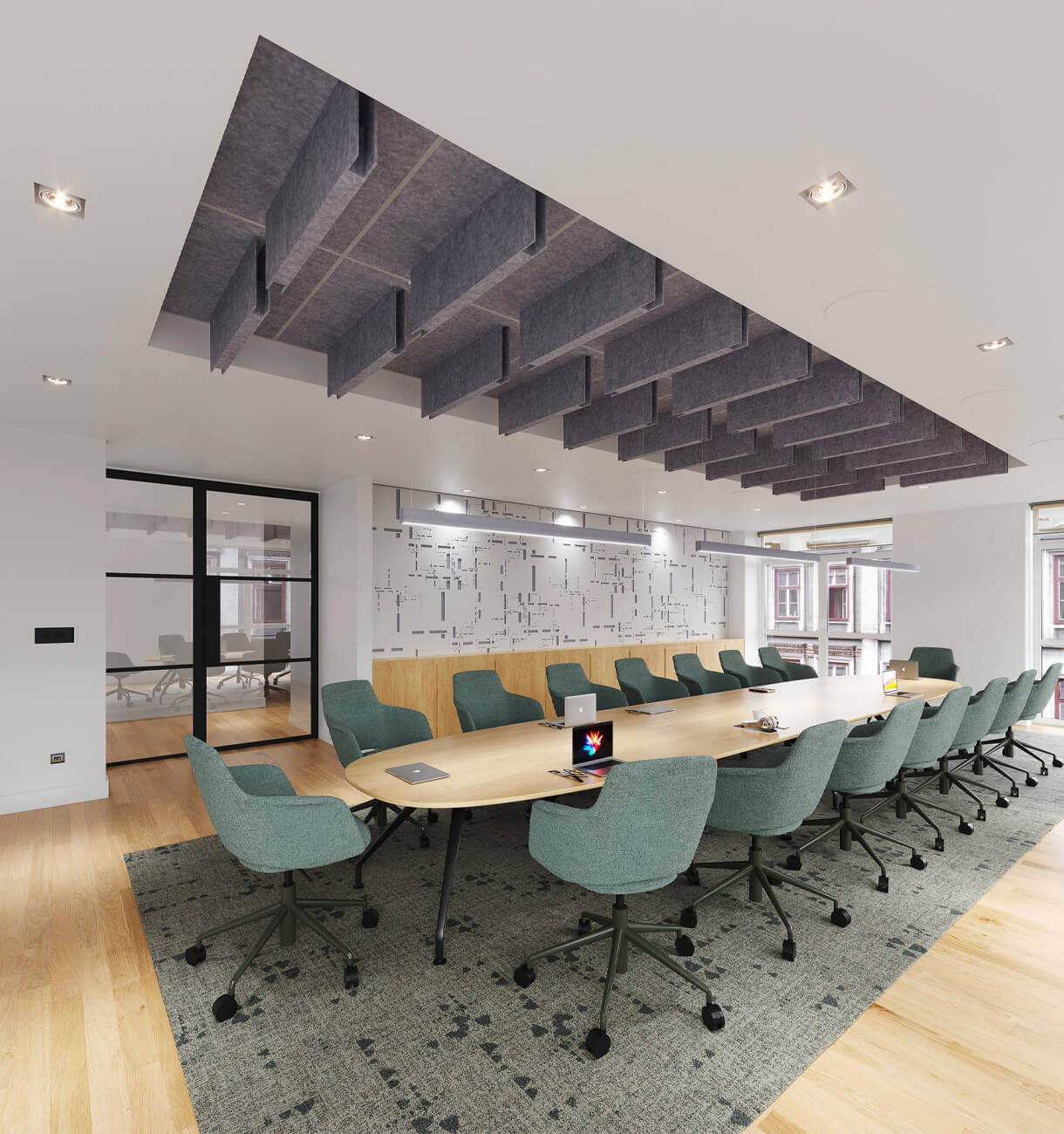
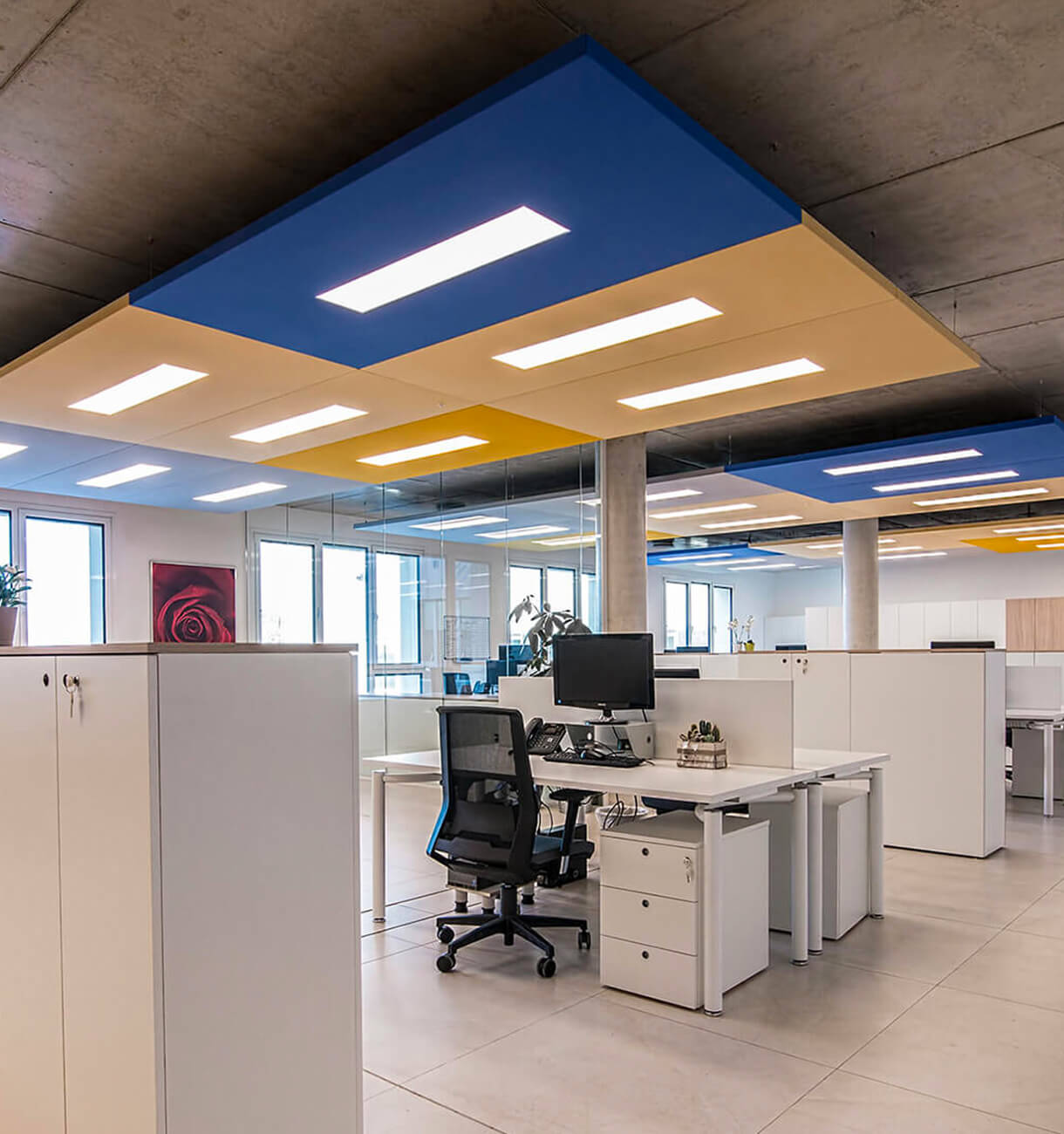
Factors to Consider when Choosing Acoustic Ceiling Tiles
When selecting acoustic ceiling tiles for your space, it’s important to consider certain factors to ensure the best results. Here are some key considerations:
Sound Absorption Performance: Look for tiles with high sound absorption ratings, such as a high Noise Reduction Coefficient (NRC) or Sound Absorption Average (SAA).
Aesthetic Appeal: Choose tiles that match the overall design and style of the space. Consider the texture, color, and pattern options available to achieve the desired aesthetic.
Fire Safety: Ensure that the acoustic ceiling tiles have appropriate fire resistance ratings. Look for tiles that comply with local fire safety regulations.
Moisture Resistance: If the space is prone to high humidity or moisture, opt for tiles that have moisture-resistant properties to prevent mold or damage.
Installation and Maintenance: Consider the ease of installation and maintenance requirements of the tiles. Some tiles may require professional installation, while others can be easily installed as a DIY project.
Budget: Set a budget for your acoustic ceiling project and explore options that fit within your financial constraints. Balance cost with quality and performance.
Certifications and Standards: Look for tiles that have been tested and certified by relevant industry standards organizations to ensure their quality and performance.
Acoustic ceiling tiles provide a practical and aesthetically pleasing solution to control noise levels and improve the acoustic environment in various spaces. With their sound absorption properties, versatility in design, and ease of installation, these tiles have become an essential element in creating comfortable and productive environments. Whether it’s a bustling office, a serene home, or an entertainment venue, acoustic ceiling tiles play a significant role in enhancing the overall experience. Consider your specific needs, budget, and aesthetic preferences when selecting the right acoustic ceiling tiles for your space, and enjoy the benefits of a quieter and more enjoyable environment.
Technic Details



Noise Reduction
One of the primary benefits of acoustic ceiling tiles is their ability to reduce noise levels. They absorb sound waves, minimizing echoes and reverberation in a room.
Enhanced Privacy
Acoustic ceiling tiles help maintain privacy by minimizing sound transmission between rooms. They prevent conversations and other noises from traveling, ensuring confidentiality in sensitive environments.
Improved Speech Intelligibility
By reducing background noise, acoustic ceiling tiles enhance speech intelligibility. This is particularly beneficial in classrooms, conference rooms, and other spaces where clear communication is essential.
Aesthetically Pleasing
These tiles come in various designs, textures, and colors, allowing you to choose options that complement the overall interior design. They can enhance the visual appeal of a space while improving acoustics.

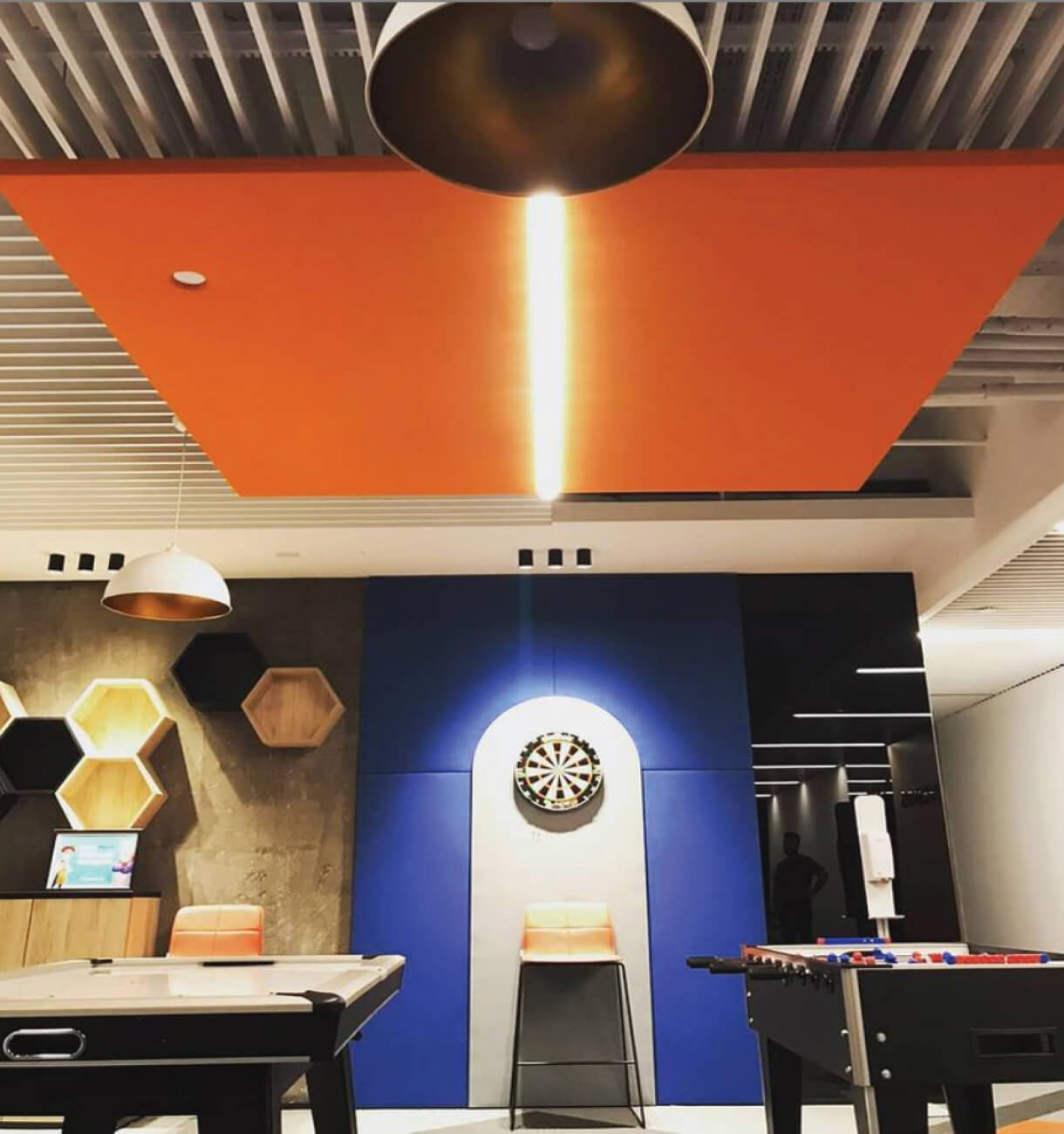
Applications of Acoustic Ceiling Tiles
Acoustic ceiling tiles find applications in various settings, improving both the acoustics and aesthetics of the space. Some common applications include:
Offices: Acoustic ceiling tiles create a productive and comfortable work environment by reducing noise distractions and enhancing speech intelligibility.
Educational Institutions: Classrooms, libraries, and lecture halls benefit from acoustic ceiling tiles, as they help students and teachers communicate effectively and create an optimal learning environment.
Healthcare Facilities: In hospitals, clinics, and medical centers, acoustic ceiling tiles contribute to a quiet and calming atmosphere, essential for patient comfort and privacy.
Entertainment Venues: Theaters, concert halls, and cinemas use acoustic ceiling tiles to achieve optimal sound quality and prevent echoes
Residential Spaces: Acoustic ceiling tiles are increasingly being used in residential spaces, such as living rooms, bedrooms, and home theaters, to create a peaceful and enjoyable atmosphere.
Hospitality Industry: Hotels, restaurants, and lounges benefit from acoustic ceiling tiles, as they help create a pleasant ambiance for guests while minimizing noise disturbances.
Retail Stores: Acoustic ceiling tiles in retail spaces improve the overall shopping experience by reducing background noise and providing better sound clarity for announcements or music.
Gyms and Fitness Centers: Acoustic ceiling tiles are used in fitness facilities to control noise levels and create a more comfortable environment for workouts and group classes.s
Installation Process
Installing acoustic ceiling tiles is a straightforward process that can be done by professionals or experienced DIY enthusiasts. Here is a general outline of the installation process:
Prepare the Surface: Ensure that the ceiling surface is clean, dry, and free of any debris. Remove any existing ceiling tiles or fixtures if necessary.
Measure and Cut: Measure the dimensions of the room and the tiles to determine the layout. Use a utility knife or a specialized tile cutter to cut the tiles according to the required sizes.
Apply Adhesive: Apply a suitable adhesive to the back of each tile and carefully position it on the ceiling surface. Press firmly to ensure proper adhesion.
Secure Tiles: Use screws or clips to secure the tiles in place, especially for larger or heavier tiles. Follow the manufacturer’s instructions for the recommended installation method.
Finishing Touches: Once all the tiles are installed, make any necessary adjustments and ensure that the tiles are aligned properly. Install any additional fixtures, such as edge trim or decorative moldings, to complete the installation.
Maintenance and Cleaning
Proper maintenance and cleaning of acoustic ceiling tiles are essential to ensure their longevity and effectiveness. Here are some tips to keep in mind:
Regular Dusting: Use a soft brush or a vacuum cleaner with a brush attachment to gently remove dust and debris from the surface of the tiles.
Spot Cleaning: For stains or marks, use a mild detergent or a specialized ceiling tile cleaner. Apply the cleaner to a soft cloth or sponge and gently wipe the affected area. Avoid excessive moisture, as it can damage the tiles.
Avoid Harsh Chemicals: Avoid using abrasive cleaners, bleach, or ammonia-based products, as they can discolor or deteriorate the tiles’ surface.
Inspect for Damage: Regularly inspect the tiles for any signs of damage, such as cracks, sagging, or loose tiles. Replace or repair damaged tiles promptly to maintain optimal acoustic performance.
Professional Cleaning: In some cases, professional cleaning may be necessary, especially for heavily soiled or hard-to-reach areas. Consult with a specialist or professional cleaning service for guidance.
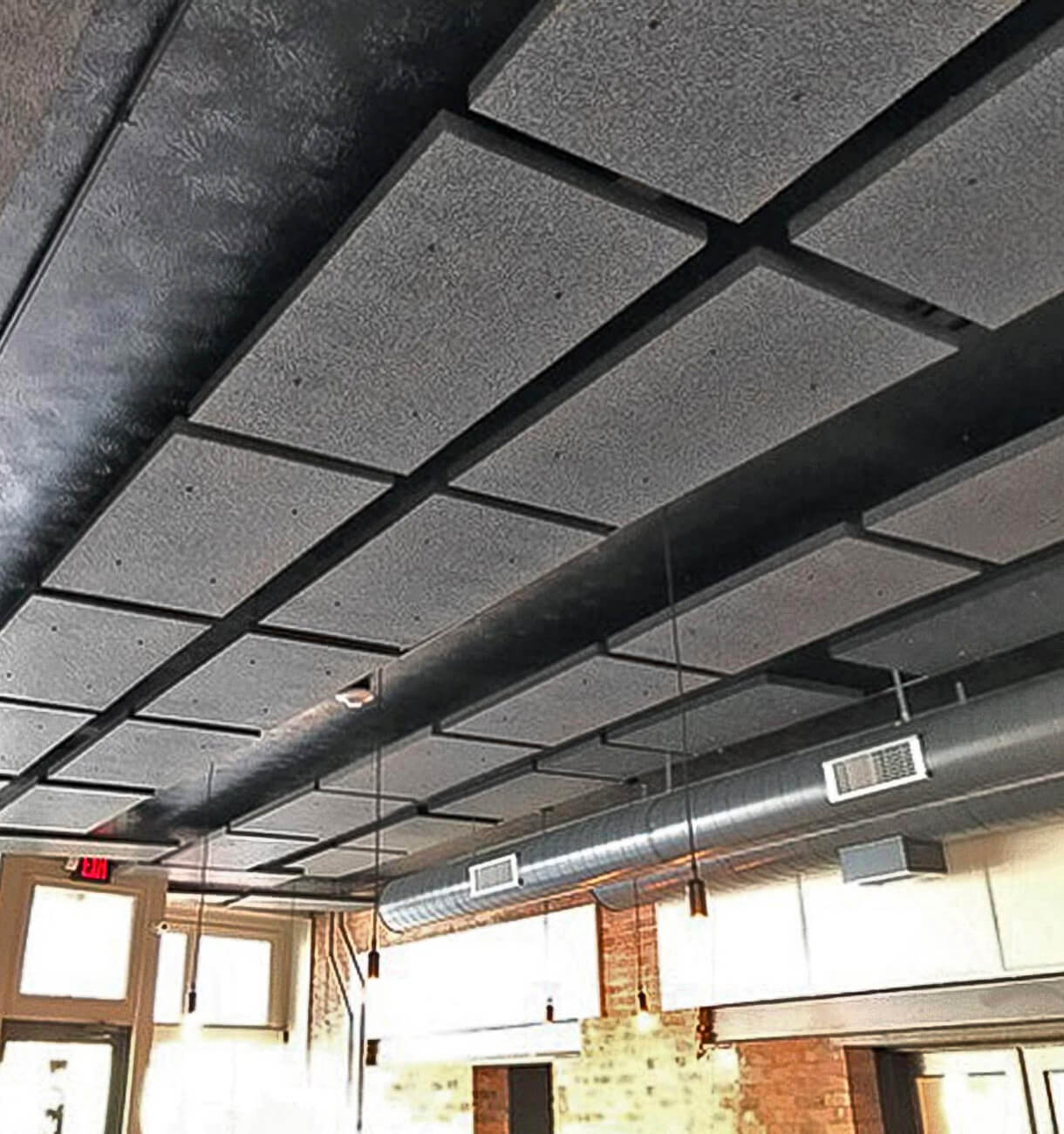
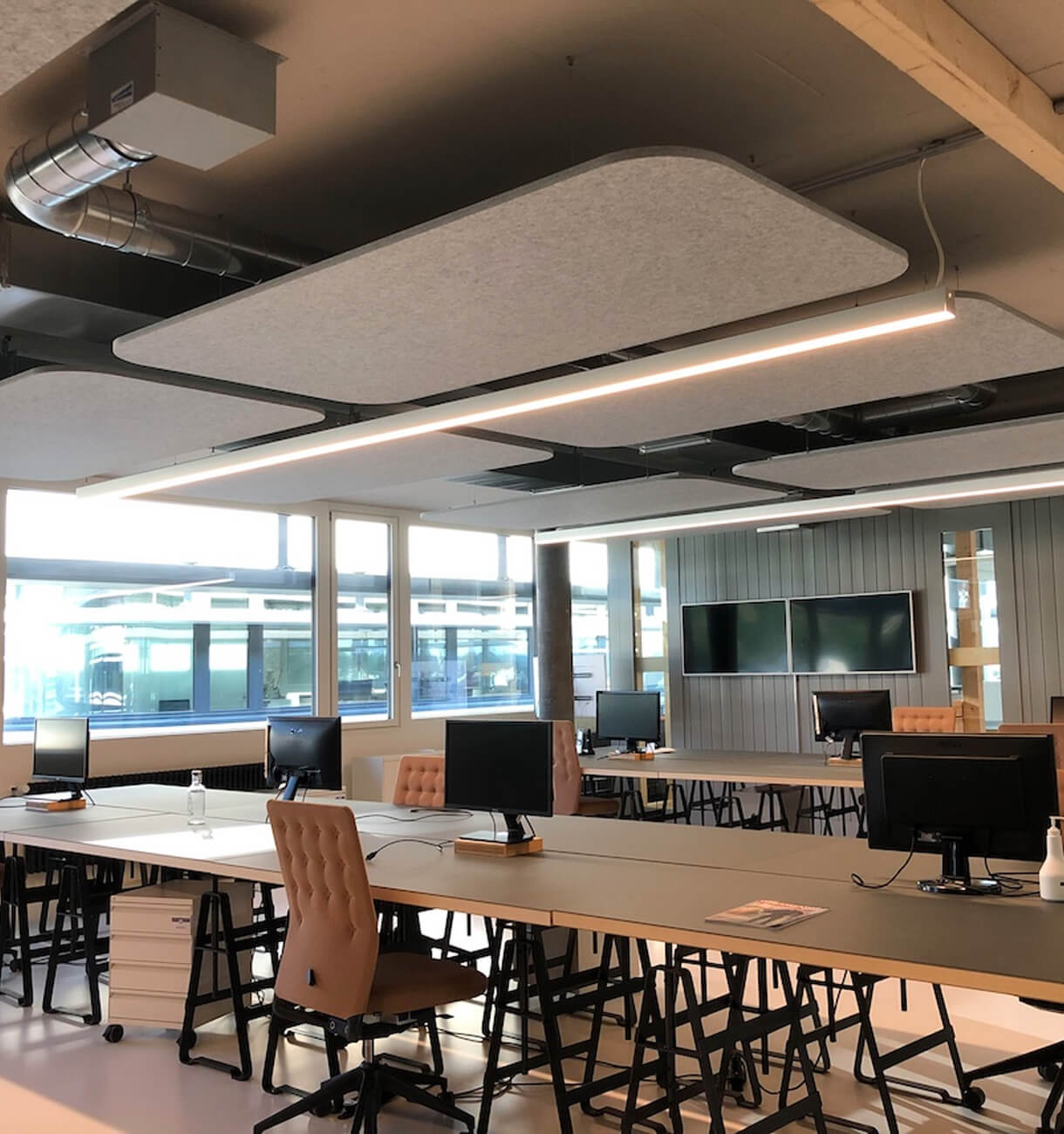
Contact Us
For Business: Do you have questions about how Manufactory can help your company? Send us an email and we’ll get in touch shortly, or phone +1 646 270 89 83 between 09:00 and 17:00 Monday to Saturday — we would be delighted to speak.
Note: Your details are kept strictly confidential as per our Company Privacy Policy.
